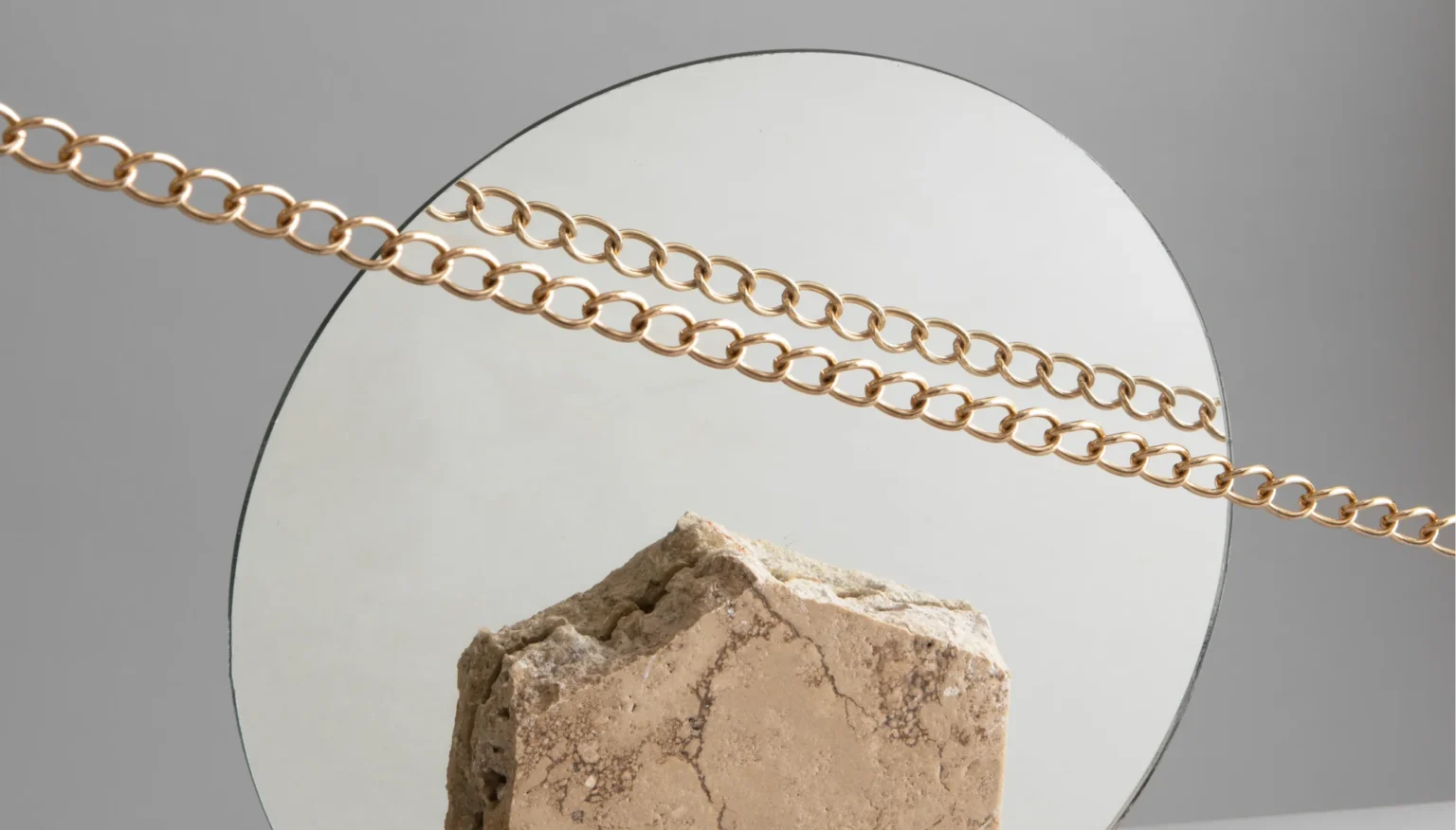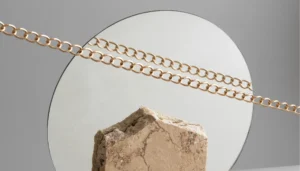Whether you’re a professional photographer looking to hone your skills or an aspiring jewelry designer looking to showcase your creations, these insights will help you create captivating images that engage viewers and drive engagement. In this article, we’ll look at the importance of lighting, creative angles, props, and styling tips to take your necklace photography to the next level. Let’s dive in and uncover the secrets to stunning necklace photography.
The importance of lighting in necklace photography
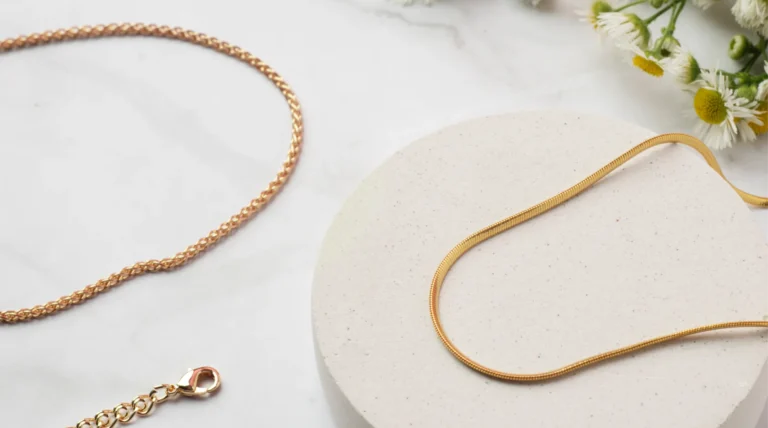
Lighting plays a crucial role in emphasizing the intricate details of a necklace, such as gemstones, chains, and clasps. Proper lighting can bring out the texture and craftsmanship of the jewelry, making it more appealing to potential buyers.
The right lighting setup can enhance the sparkle and shine of gemstones and precious metals in a necklace. By strategically positioning light sources, you can make the jewelry appear more radiant and luxurious, capturing the attention of viewers.
Harsh shadows can obscure important features of a necklace and detract from its overall appeal. Proper lighting techniques, such as diffusing light or using reflectors, can help minimize shadows and create a more evenly lit photograph, allowing the necklace to stand out against the background.
It can also contribute to the mood and atmosphere of a photograph. Soft, diffused lighting can evoke a sense of elegance and sophistication, while dramatic lighting setups can add a sense of mystery or intrigue to the image. By carefully manipulating light, you can create compelling visuals that resonate with viewers on an emotional level.
Consistent lighting across multiple photographs is essential for maintaining brand identity and visual cohesion. Whether shooting a single necklace or an entire collection, consistent lighting ensures that all images have a uniform look and feel, reinforcing brand recognition and professionalism.
High-quality lighting can convey the value and quality of the necklace to potential buyers. By showcasing the jewelry in the best possible light, you can instill confidence in customers and encourage them to make a purchase.
In essence, lighting is a powerful tool that can significantly enhance the appeal and presentation of necklaces in product photography. By understanding the principles of lighting and applying them effectively, you can create captivating images that showcase the beauty and allure of the jewelry, ultimately driving sales and engagement.
Creative angles to showcase necklaces
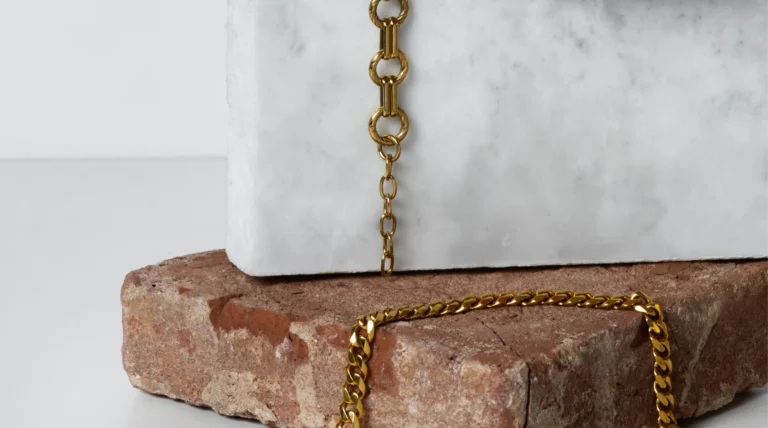
Experimenting with different angles can provide unique perspectives that highlight the necklace’s design and craftsmanship. Creative angles play a vital role in necklace photography by offering unique perspectives that highlight the jewelry’s design, features, and overall aesthetic appeal.
Overhead Shots: Shooting the necklace from above is a classic technique that allows you to capture the entire length of the jewelry in a single frame. This angle is ideal for showcasing the overall design, symmetry, and layout of the necklace, providing viewers with a comprehensive view of the piece.
Tilted Angles: Tilting the camera slightly can add dynamism and visual interest to necklace photographs. By angling the camera off-center, you can create a sense of depth and dimension, drawing the viewer’s eye to specific details or focal points within the necklace, such as pendants or gemstones.
Close-Up Shots: Close-up shots focusing on specific elements of the necklace, such as clasps, chains, or intricate patterns, can reveal the jewelry’s craftsmanship and finer details. Macro photography techniques can be employed to capture these minute features with exceptional clarity and sharpness, adding depth and texture to the images.
Depth of Field Manipulation: Experimenting with depth of field can yield creative results in necklace photography. Using a shallow depth of field can isolate the necklace from the background, creating a soft, dreamy effect that accentuates its beauty and elegance. Alternatively, a deep depth of field can ensure that the entire necklace remains in sharp focus, allowing viewers to appreciate its entirety.
Unconventional Perspectives: Thinking outside the box and exploring unconventional perspectives can lead to visually striking necklace photographs. This might involve shooting the necklace from unexpected angles, such as from below or through a reflective surface, to create intriguing compositions that challenge viewers’ perceptions and invite them to explore the jewelry from new angles.
Dynamic Composition: Incorporating dynamic composition techniques, such as leading lines, diagonals, or framing, can add visual interest and energy to necklace photographs. By carefully composing the shot, you can guide the viewer’s gaze and create a sense of movement and flow within the image, enhancing its overall impact and appeal.
In summary, creative angles allow you to showcase necklaces in innovative and visually compelling ways. By experimenting with different perspectives, compositions, and techniques, you can create captivating images that captivate viewers’ attention and highlight the beauty and intricacy of the jewelry.
Utilizing props

Incorporating props and styling elements can add context and character to necklace photography. Consider using items such as vintage books, flowers, or fabric backdrops to create visually appealing compositions. Pay attention to color schemes and textures that complement the necklace, adding visual interest without overshadowing the main subject.
Props can help provide context for the necklace, giving viewers a sense of how it might be worn or used in real life. For example, displaying a necklace alongside matching earrings or a bracelet can help customers envision the complete jewelry set.
You can use props to tell a story or evoke a particular mood or theme in the photographs. For instance, placing a necklace on a vintage jewelry box or next to a handwritten love letter can create a romantic ambiance, while incorporating seashells or sand can evoke a beach or vacation theme.
Props can also be used to add scale and dimension to the photograph, providing a reference point for the size of the necklace. For example, placing a necklace next to everyday objects like a coin or a piece of fruit can help viewers gauge its size more accurately.
Strategically position them to enhance the composition of the photograph and draw attention to the necklace. Consider using props with complementary colors, textures, or shapes to create visually appealing compositions that highlight the jewelry.
Some elements can be selected to reflect the brand identity and aesthetic of the jewelry. For example, incorporating vintage books, flowers, or fabrics can convey a sense of elegance and sophistication, aligning with the brand’s image.
While props can enhance the overall composition, it’s essential to ensure they don’t overshadow the main subject—the necklace. They should complement the jewelry without detracting attention from it. Keep them simple and minimalistic to maintain focus on the necklace.
Don’t be afraid to experiment with different placements and arrangements to find the most visually compelling compositions. Try placing props in the foreground, background, or alongside the necklace to see what works best for highlighting the jewelry.
By thoughtfully selecting and incorporating props into necklace photography, you can create captivating images that not only showcase the beauty of the jewelry but also tell a compelling visual story, resonating with viewers and driving engagement.
Styling tips
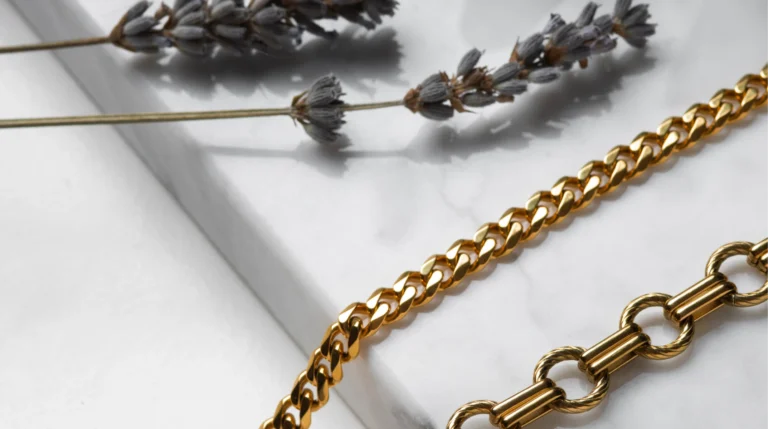
Styling plays a crucial role in necklace photography as it helps enhance the overall presentation and appeal of the jewelry. Here are some styling tips to consider when photographing necklaces:
Consider the Necklace’s Design: Before styling the photograph, carefully consider the design and aesthetic of the necklace. Is it a delicate, intricate piece or a bold statement necklace? The styling should complement the necklace’s design rather than overpowering it.
Choose a Suitable Background: Select a background that enhances the necklace without competing for attention. A plain background, such as white or neutral tones, can help draw focus to the jewelry. Alternatively, using textured backgrounds or props can add visual interest and context to the photograph.
Pay Attention to Color Coordination: Coordinate the colors of the necklace with the background and any accompanying props or styling elements. Harmonious color schemes can create a visually appealing composition while contrasting colors can add drama and impact.
Experiment with Layering: If photographing layered necklaces or necklaces with pendants, experiment with different layering techniques to showcase each piece effectively. Avoid tangling the necklaces and ensure they lie flat and evenly spaced for a polished look.
Mind the Clasp: Pay attention to the positioning of the necklace’s clasp when styling the photograph. Ensure the clasp is hidden or positioned discreetly to maintain a seamless appearance and prevent distractions from the main focus—the necklace itself.
Accessorize Thoughtfully: If incorporating additional accessories or styling elements, such as earrings, bracelets, or props, do so thoughtfully to complement the necklace without overwhelming it. Less can often be more when it comes to styling, so opt for simplicity and elegance.
Consider the Necklace’s Length and Shape: Take into account the length and shape of the necklace when styling the photograph. Longer necklaces may benefit from draping or looping techniques to showcase their full length, while shorter necklaces can be styled more compactly.
Showcase Different Perspectives: Experiment with various angles and perspectives to capture the necklace from different viewpoints. Close-up shots can highlight intricate details, while overhead shots can showcase the necklace’s entire length. Don’t be afraid to get creative with your compositions.
Maintain Consistency: If photographing multiple necklaces as part of a collection, maintain consistency in styling elements such as background, lighting, and composition. This ensures a cohesive look and feel across all images, reinforcing brand identity and professionalism.
By following these styling tips, photographers can create visually stunning images that showcase the beauty and elegance of necklaces, capturing the attention of viewers and enticing them to explore further.
Wrapping up
In conclusion, mastering the art of necklace product photography requires attention to detail, creativity, and technical skill. Whether you’re photographing delicate chains adorned with gemstones or bold statement pieces, these techniques will help you capture the essence of the jewelry and entice viewers to explore further. Remember to experiment, refine your techniques, and let your creativity shine through in every photograph.
FAQ
What type of lighting setup is best for necklace photography?
A softbox or diffused natural light is ideal to avoid harsh shadows and bring out the necklace’s sparkle and details.
How can I capture the intricacies of a delicate necklace design?
Try shooting from multiple angles, including close-up shots, to highlight intricate details like clasps, chains, and gemstone settings.
What are the most used props in necklace photography?
Props such as vintage books, flowers, textured fabric, or jewelry stands can add context and visual interest to the photographs.
Should I use a plain background or incorporate a setting for necklace photography?
Both options can work well depending on the desired aesthetic. A plain background can bring attention to the necklace, while incorporating a setting can add context and character to the photograph.
How can I ensure consistent lighting across multiple necklace photographs?
Maintain a consistent lighting setup and camera settings throughout the photo shoot. Additionally, use a white balance card to achieve uniform color tones in the photographs.
